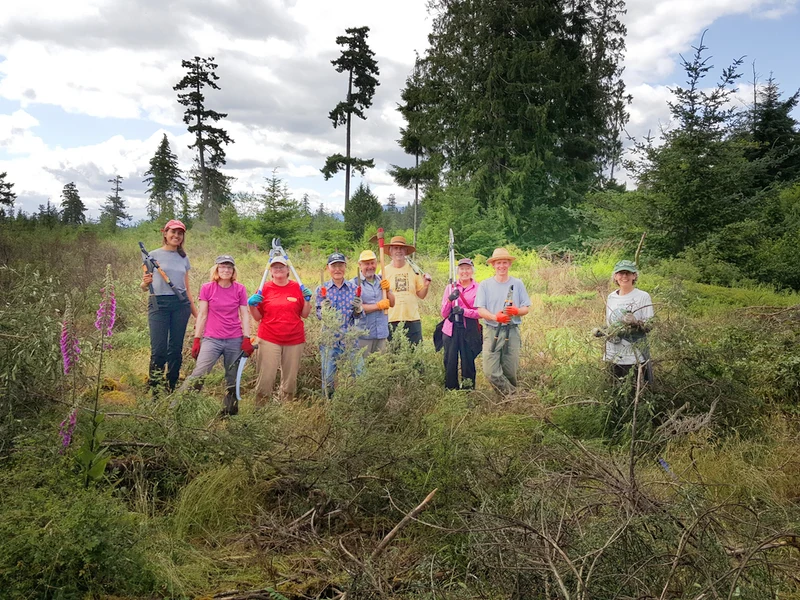December Daphne Days!
In the past few years, I’ve noticed that invasive Daphne (daphne laureola) a.k.a Spurge-Laurel is becoming a real problem across Denman Island. I’m seeing it in new places nearly every time I go out for a walk. This month, we hope you will join Denman Conservancy in our first ever December Daphne Days! For the month of December, let’s learn about Daphne, and get out and remove it!
Daphne Info Webinar: To kick off Daphne Days, Heidi Grant from Coastal Invasive Species Committee will be giving an online talk on the biology of Daphne, and how we can use this information to control its presence on the island. As well, learn more about how Coastal ISC can help you with other invasive plants on your property.
The talk will be conducted via Zoom on December 8th at 6PM.
Link to it here:
Join Zoom Meeting
https://us02web.zoom.us/j/
Meeting ID: 815 6884 8117
Passcode: Daphne
A Bit About Daphne: Popular as an ornamental in gardens and for florists, due to its glossy, rhododendron-like leaves and fragrant flowers, Daphne is tolerant of both sun and shade but rapidly takes over native vegetation by forming dense thickets in a range of ecosystems. Its deep black berries are loved by birds, who spread its seeds. It occupies similar niches as native species like Salal and Oregon Grape, which provide important shelter, forage and nectaring opportunities for many wildlife species. When the plants are small, they can easily be mistaken for another leathery species that grows in similar forested environments: ‘Prince’s Pine’ – Chimaphila umbellata. However, this native species has serrated leaf edges, grows in creeping clusters of plants and is much smaller, not growing larger than about 30 cm tall. (See photos for comparison.)


December ‘One-A-Day’ Daphne Removal Campaign: December is a great time to control Daphne, as it is present year-round and is easier to access with the dieback of native vegetation. Tackling it now while it is flowering means preventing further spread of this plant since berries have usually not yet formed or matured. Rains at this time of year moisten the soil so that pulling out smaller plants is easier than when soils are dry.
We challenge you to get out and remove just one plant (or one small patch of Daphne plants) each day this month where you live. Take a photo and keep track of your numbers. Watch our Facebook page for updates and send your photos and removal updates to dcalandmanager[at]gmail[dot]com. The person who removes the most Daphne plants this month will win a $25 gift certificate to Abraxas books!
How to Manually Control Daphne: When removing Daphne, use gloves and pull small plants by hand, especially when the ground is moist. Remove larger plants (more than 30 cm) by cutting the stem just below ground level, with as little disturbance to the soil as possible, even though this means leaving part of the root system behind. Mind the Sap! The bark, sap and berries of Daphne can cause skin irritation (and in rare cases nausea or vomiting). So, make sure to wear gloves when handling it. Daphne won’t re-root from cut pieces, so it’s ok to ‘chop and drop’ it, as long as it’s not somewhere where children or pets might get into it, due to the toxicity factor. If you’re worried about that, plants can also be collected and buried, or bagged and brought to landfill. Daphne should never be burned due to its toxic compounds.
If you have Daphne in your garden, consider replacing it with an alternative that will not threaten local native ecosystems. BC Invasive Species Council suggests the following plants as alternatives for Daphne in gardens: Evergreen Huckleberry (vaccinium ovatum); Japanese Azalea (rhododendron kiusianum hybrids); Oregon Grape (berberis nervosa); Tall Oregon Grape (berberis aquifolium); Winter Daphne (daphne odora).
This December (and anytime), if you see Daphne where you live, or on trails where you spend time, please consider taking a few minutes to pull it out or cut it and help keep island biodiversity thriving!


